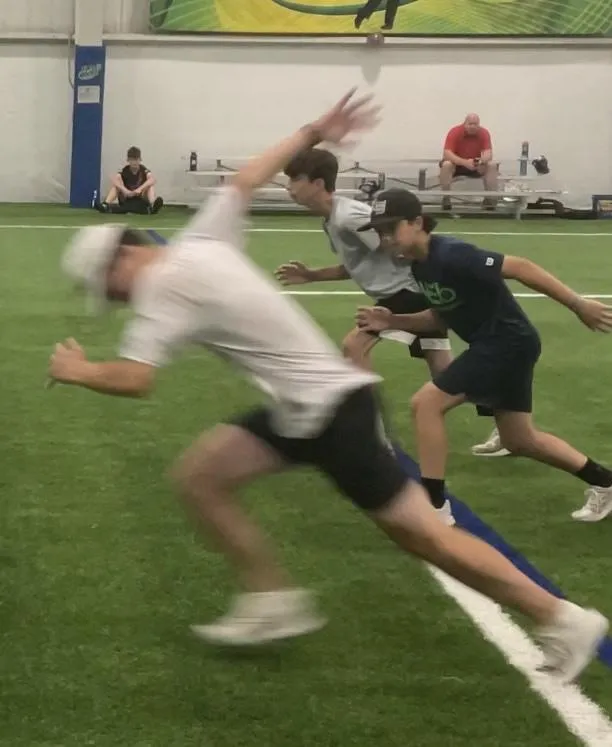ATHLETE BLOG LEOMINSTER

5 Ways Athletes Sabotage Their Own Speed Development
Speed is a quality which everyone has a certain amount of genetic potential.
As we get older, our limbs grow longer and stronger which makes it easier to naturally improve into our teenage years.
Depending on what we do for physical activity, we adapt to maximize our natural gifts...or we don't.
And since speed is the quality that coaches crave most, it is in a kid's best interest to minimize the activities that are slowing them down if being fast is key to success in their sport.
These are the five activities and habits that I continually see overdone, causing athletes to play slower over time.
Too Much Distance Running
We'll get this out of the way quickly since, if you read these posts often, you've heard me rant about it endlessly.
When your body adapts to a slow endurance stride, it seeps into your sprint mechanics and creates a lot of bad habits.
Heel strike landings, low knee cycling, poor arm drive and a forward torso lean are the dead giveaways when you watch someone try to sprint their fastest.
Too Much Heavy Strength Training
There are lots of athletic benefits to becoming stronger, no doubt about it.
And at the right amounts, heavy strength training can 100% IMPROVE your speed potential.
But when it is taken too far, or structured poorly, strength work absolutely will slow you down.
It happens for 2 reasons.
The first is that it can create tightness in muscles, most notably around the hips, which limits your stride length.
So you have to take more strides to cover the same amount of distance.
The other is it can interfere with your coordination, as the natural balance of various muscle groups is thrown out of whack.
Coordination is particularly affected by bodybuilding-style training.
Athletic workouts should have a balance of various skills, not just endless iron pumping, if you want to play your fastest.
The Tap Dance Start
In an attempt to feel like they're moving fast, many kids will take a bunch of short and quick strides to get up to top speed.
Watch any Olympic sprinter, though, and you'll see they all take the absolute longest first few strides possible.
Why?
Because that's the best way to build up speed.
Long, low, explosive strides when accelerating are always going to be your best strategy.
Those little strides are slowing you down!
Never Getting Real Recovery Time
This one actually inhibits a lot more than just speed potential.
When your body is constantly overworked, it never has a chance to properly catch up to the stresses placed upon it.
Athletes playing on multiple teams at once, or who play their sport year-round, are prime candidates for this issue.
What often happens is these kids play with minor aches and pains most of the time due to the repetitive pounding their joints take.
This leads to changes in their movement patterns, and I can promise those changes never lead to better technique.
It always throws it off, leading to less speed development than the kids who keep things more in balance.
Not Sprinting Enough
This at first may seem like a contradiction of the previous point.
Despite all the practices, games, and training involved in playing youth sports these days, many athletes rarely move at 95% - 100% of their fastest speed.
They do skill work, conditioning, lifting and the like.
Coaches may have them run sprints at times, but lots of kids won't run their fastest in these circumstances unless they have a reason to do so.
But it is only when we move our fastest that changes in our nervous system must take place, so we adapt and improve in the future.
Even just 2 or 3 sprints a day would do the trick, it doesn't have to be a huge addition to your schedule.
So long as they are 95% effort or more, and you aren't already overworked, these will help.
For most kids, it is the speed of the game that eventually makes it hard to succeed at a certain level of their sport.
Of course there are many ways to build on your genetic speed potential through training, as well.
But at a minimum, do your best to avoid the mistakes listed above so you can at least play to your natural ability.
Power Source Reviews
© Copyright 2024. Power Source. All rights reserved.
|
